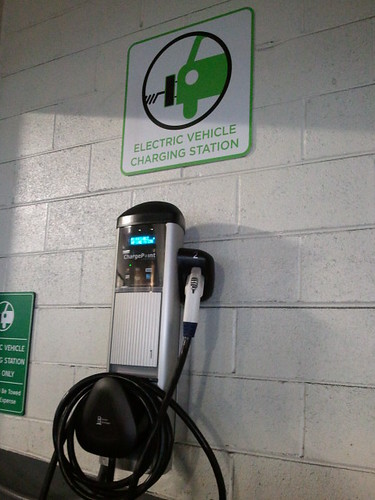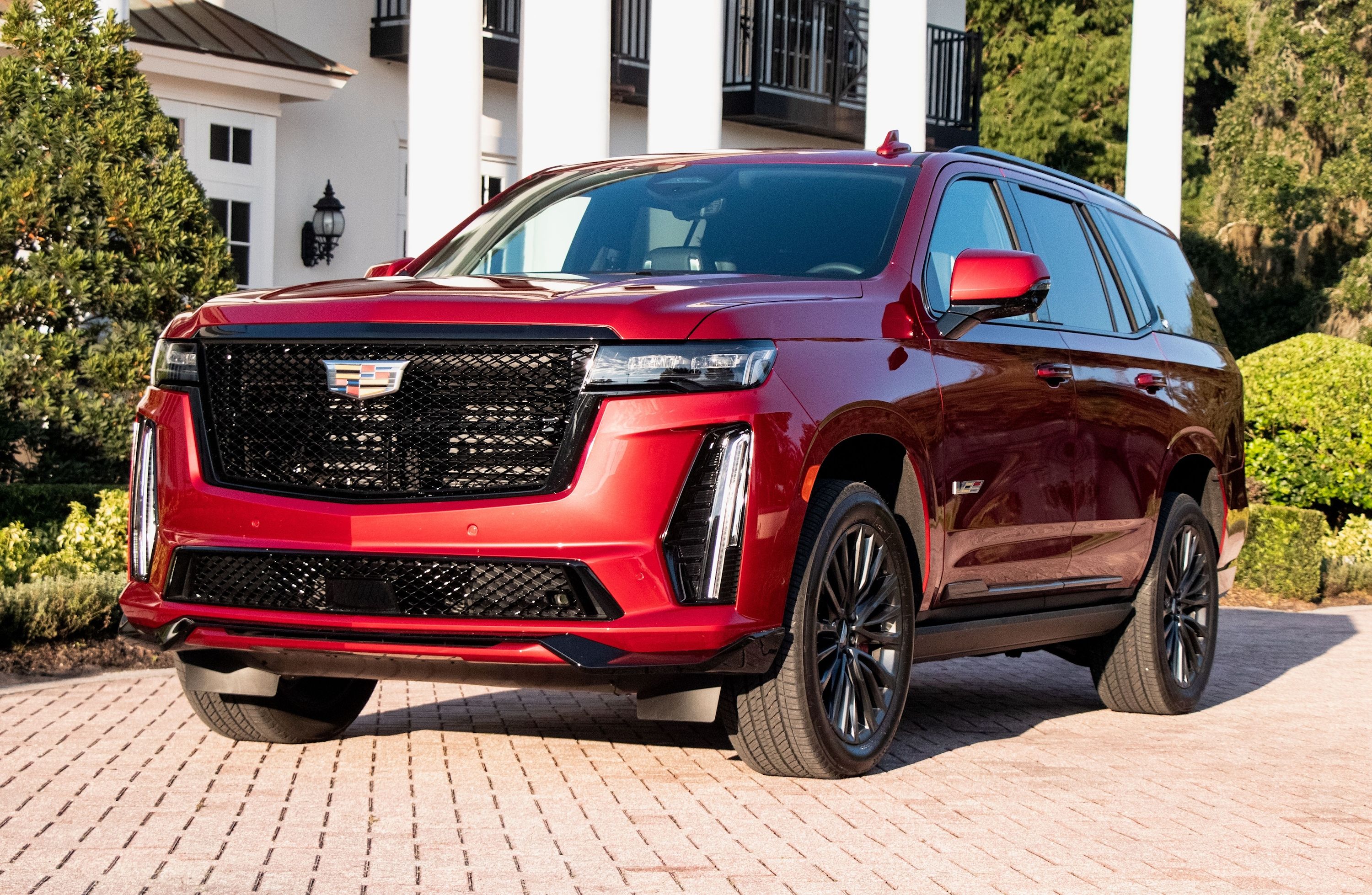
SUVs have undeniably claimed dominance on our roads, offering a compelling blend of commanding presence, ample space, and versatile all-weather capability. They are often perceived as the ideal solution for families, adventurous spirits, and daily commuters alike, promising a robust and dependable ride for years to come. The expectation for many buyers is that their SUV will serve as a long-term companion, faithfully clocking hundreds of thousands of miles with minimal fuss.
However, the reality of SUV ownership isn’t always so straightforward. While a select group of these vehicles is engineered with such bulletproof reliability that they easily surpass 200,000 miles, an alarming number of models struggle to make it much past the warranty period without accumulating a laundry list of costly repairs. The crucial distinction between these categories often lies in fundamental reliability, build quality, and long-term durability – attributes that are rarely apparent from a glossy brochure or a captivating commercial.
This authoritative guide aims to equip you with the insights needed to navigate the complex world of SUV reliability. We delve into the models that, despite initial appeal, have proven to be significant liabilities for their owners, becoming notorious money pits rather than trusted long-haul partners. By examining their common failure points, this analysis will highlight critical patterns that countless owners and technicians have experienced firsthand, helping you avoid a potentially frustrating and expensive purchasing decision.

1. Jeep Cherokee (2014–2020)
The revival of the Jeep Cherokee nameplate for the 2014-2020 model years was met with considerable anticipation, promising a blend of modern styling, urban practicality, and a touch of that legendary off-road heritage. However, this generation quickly earned a reputation for delivering one of the most frustrating ownership experiences in recent SUV history. Its issues stemmed largely from serious mechanical flaws, particularly within its powertrain, which undermined any initial appeal and led to premature breakdowns.
The most significant concern for these Cherokees revolves around the ZF 9-speed automatic transmission. Touted for its fuel efficiency and smooth shifting upon introduction, its real-world performance has been, to put it mildly, a disaster. Owners consistently reported harsh shifts, pronounced hesitation, unsettling clunking noises, and in numerous instances, outright transmission failure. Jeep attempted to address these widespread complaints with multiple software updates and recalls, but the fundamental problems persisted, often requiring full transmission replacement, sometimes more than once, well before the vehicle reached 100,000 miles.
Beyond the transmission, the optional 2.4-liter Tigershark inline-four engine also contributed significantly to the Cherokee’s poor reliability scores. This engine became infamous for excessive oil consumption, frequently leaving owners running critically low on oil between routine changes, which often culminated in severe engine damage. While the more powerful V6 option generally fared better, the overarching cloud of the Cherokee’s troubled reputation cast a long shadow over all available powertrains, affecting consumer confidence and resale values.
Compounding these mechanical woes were pervasive electrical issues. Reports frequently cited glitches with the Uconnect infotainment system, random illumination of warning lights, failures of the backup camera, and faulty keyless entry systems in owner complaints and technical service bulletins. The interior, especially in lower trim levels, also drew criticism for its rapid wear and susceptibility to developing rattles, further diminishing the long-term ownership experience.
For many unsuspecting buyers, the 2014–2020 Jeep Cherokee represented an opportunity to own a ‘cool’ Jeep in a compact and practical package. Instead, they often found themselves saddled with a vehicle that frequently left them stranded or facing prohibitively expensive repairs far earlier than any reasonable expectation. The subsequent hit to resale values further cemented this generation’s status as a cautionary tale in automotive engineering and execution, highlighting how overambitious design can lead to chronic reliability problems.
Car Model Information: 2011 Jeep Grand Cherokee Laredo
Name: Jeep Cherokee
Caption: Fifth generation (KL)
Manufacturer: Jeep
Aka: Jeep Liberty
ModelYears: unbulleted list
Class: unbulleted list
Layout: unbulleted list
Chassis: unbulleted list
Categories: All-wheel-drive vehicles, Anti-Indigenous racism in the United States, Articles with short description, Compact sport utility vehicles, Crossover sport utility vehicles
Summary: The Jeep Cherokee is a line of sport utility vehicles (SUV) manufactured and marketed by Jeep over six generations. Marketed initially as a variant of the Jeep Wagoneer (SJ), the Cherokee has evolved from a full-size station wagon (before the SUV description came into use) to one of the first compact SUVs and into its latest generation as a crossover SUV.
Named after the Cherokee tribe of Native Americans in the United States, Jeep has used the nameplate in some capacity since late 1973 when American Motors Corporation (AMC) introduced the 1974 model year line.
Production of the Cherokee ended in February 2023. The Cherokee nameplate has since been used by the Grand Cherokee and its extended version, the Grand Cherokee L.
Get more information about: Jeep Cherokee
Buying a high-performing used car >>>
Brand: Jeep Model: Cherokee
Price: $9,485 Mileage: 126,077 mi.
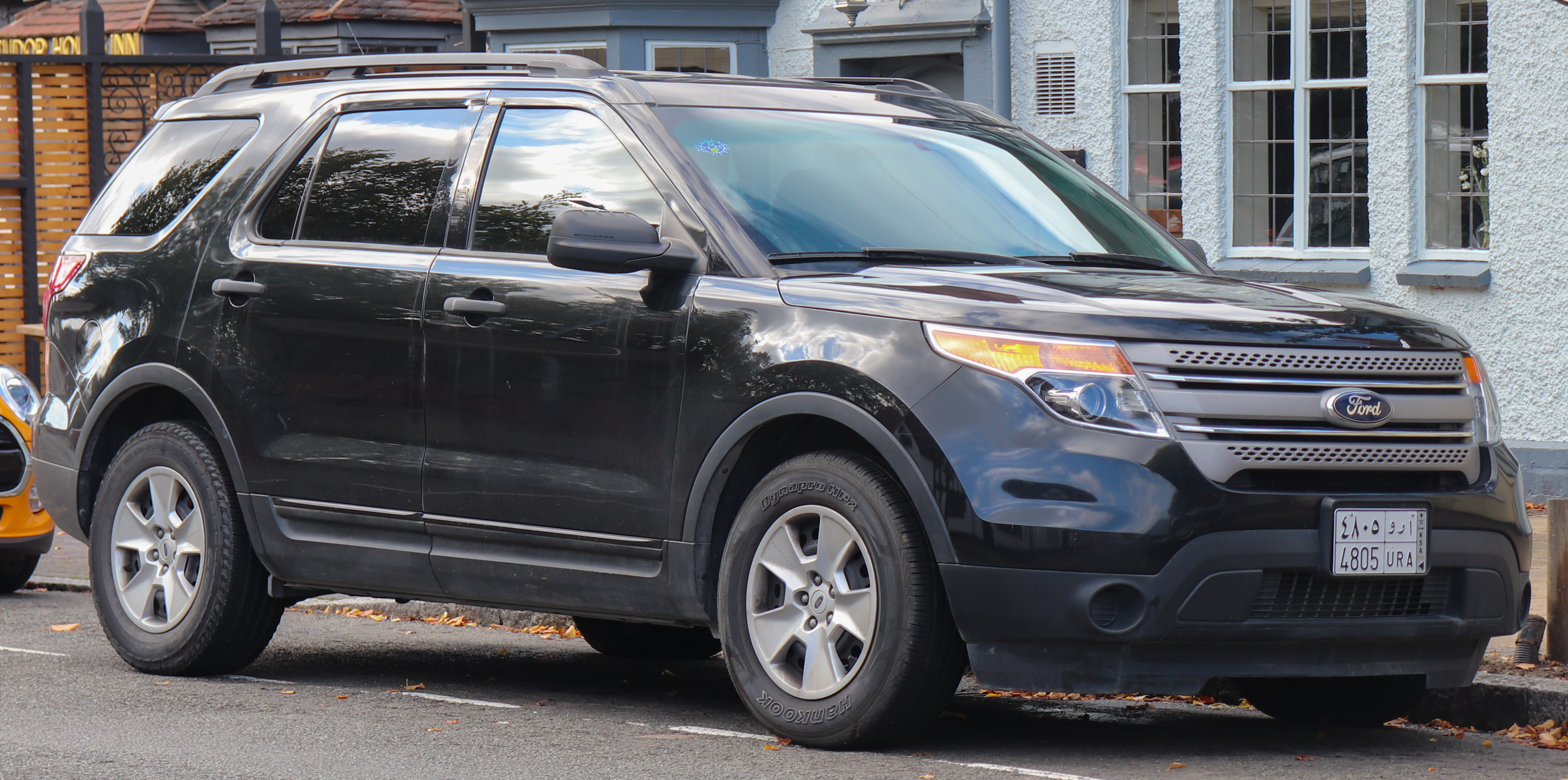
2. Ford Explorer (2011–2019)
The 2011–2019 Ford Explorer represented a pivotal shift for one of America’s most recognizable SUV nameplates. Abandoning its traditional body-on-frame architecture for a more refined unibody design, this generation aimed to offer enhanced comfort, family-friendliness, and improved fuel efficiency. Yet, this iteration of the Explorer has unfortunately become notorious not for its innovations but for a series of serious reliability issues that transformed it into a costly gamble for many long-term owners.
Among the most frequent and severe complaints lodged against this Explorer generation is its 6-speed automatic transmission. These units have been widely reported to exhibit harsh shifting, noticeable slipping between gears, concerning hesitation, and a tendency towards premature failure, often manifesting well before the 80,000-mile mark. For an SUV that commonly serves as a primary family vehicle or a demanding fleet workhorse, such fundamental powertrain failures have proven particularly devastating, often leading to owners incurring thousands of dollars in expenses for rebuilt or entirely replaced transmissions, sometimes on multiple occasions.
Another significant flaw involved the cooling system and overall engine reliability, a problem particularly pronounced with the turbocharged EcoBoost engines. While these engines were designed to deliver respectable performance, they showed a susceptibility to issues such as overheating, problematic carbon buildup, turbocharger failures, and coolant intrusion. Disturbingly, some 2.0L and 3.5L EcoBoost engines suffered catastrophic failures stemming from head gasket issues or warped internal components. Even the naturally aspirated V6 engines were not entirely exempt from trouble, with common complaints including leaking water pumps that were inconveniently situated inside the engine, necessitating extensive and costly labor for access and repair.
The Explorer also faced a widespread and alarming issue with exhaust fume intrusion, a problem so prevalent that it triggered multiple class-action lawsuits and a thorough investigation by the National Highway Traffic Safety Administration (NHTSA). Many owners of 2011–2017 Explorers reported a distinct and unpleasant odor of exhaust fumes permeating the cabin, particularly under hard acceleration. This wasn’t merely an annoyance; it represented a potential health hazard for occupants, casting a serious cloud over the vehicle’s safety credentials.
Furthermore, the electronic systems in this Explorer generation proved to be another weak point. Malfunctions with the MyFord Touch infotainment system, intermittent power loss to critical components, faulty sensors, and persistent door latch problems all contributed to the Explorer’s dismal reliability ranking. The cumulative cost of ownership could escalate rapidly, even for vehicles that had yet to reach 100,000 miles. While this Explorer offered generous interior space and comfort when new, its long-term track record reveals a vehicle plagued by fundamental mechanical and design failures, making it one of the most regrettable choices for buyers expecting a full-size SUV to endure for a decade or more.
Car Model Information: 2022 Ford Explorer Platinum
Name: Ford Explorer
Caption: Sixth-generation Ford Explorer
Manufacturer: Ford Motor Company
Production: 1990–present
ModelYears: 1991–present
Class: unbulleted list
Chassis: unbulleted list
Predecessor: Ford Bronco II
Successor: Ford Territory (Australia)
Categories: 2000s cars, 2010s cars, 2020s cars, All-wheel-drive vehicles, All Wikipedia articles in need of updating
Summary: The Ford Explorer is a range of SUVs manufactured by the Ford Motor Company since the 1991 model year. The first five-door SUV produced by Ford, the Explorer, was introduced as a replacement for the three-door Bronco II. As with the Ford Ranger, the model line derives its name from a trim package previously offered on Ford F-Series pickup trucks. As of 2020, the Explorer became the best-selling SUV in the American market.
Currently in its sixth generation, the Explorer has featured a five-door wagon body style since its 1991 introduction. During the first two generations, the model line included a three-door wagon (directly replacing the Bronco II). The Ford Explorer Sport Trac is a crew-cab mid-size pickup derived from the second-generation Explorer. The fifth and sixth generations of the Explorer have been produced as the Ford Police Interceptor Utility (replacing both the Ford Crown Victoria Police Interceptor and the Ford Police Interceptor Sedan).
The Explorer is slotted between the Ford Edge and Ford Expedition within North America’s current Ford SUV range. The model line has undergone rebadging several times, with Mazda, Mercury, and Lincoln each selling derivative variants. Currently, Lincoln markets a luxury version of the Explorer as the Lincoln Aviator.
For the North American market, the first four generations of the Explorer were produced by Ford at its Louisville Assembly Plant (Louisville, Kentucky) and its now-closed St. Louis Assembly Plant (Hazelwood, Missouri). Ford currently assembles the Explorer alongside the Lincoln Aviator and the Police Interceptor Utility at its Chicago Assembly Plant (Chicago, Illinois).
Get more information about: Ford Explorer
Buying a high-performing used car >>>
Brand: Ford Model: Explorer
Price: $34,799 Mileage: 35,791 mi.

3. Chevrolet Equinox (2010–2017)
The Chevrolet Equinox, across its 2010 to 2017 model years, entered the compact SUV segment with promises of stylish aesthetics, commendable fuel economy, and a comfortable ride. However, for a substantial number of owners, this promise dissolved into a challenging reality, characterized by a relentless stream of costly engine problems, significant transmission trouble, and premature component failures. These issues collectively eroded owner satisfaction and severely hampered the model’s long-term appeal, making it a difficult recommendation for those seeking dependability.
The most glaring reliability concern originated from the 2.4-liter Ecotec four-cylinder engine, which was the most commonly offered powerplant during this period. This particular engine gained notoriety for its excessive oil consumption, a problem so severe that many owners reported their engines running dangerously dry between scheduled oil changes, often without any prior warning. This pervasive issue frequently led to profound internal engine damage, including worn piston rings, cylinder scoring, and in countless cases, necessitated a complete engine replacement. While GM eventually responded with technical service bulletins and extended warranties, for thousands of affected owners, the damage, both mechanical and financial, was already irrevocably done.
Unfortunately, the engine’s woes did not stop there. The timing chain system within these Ecotec engines was identified as another significant weak point, prone to premature failure that could trigger catastrophic internal engine damage. Coupled with fragile PCV (Positive Crankcase Ventilation) systems and poorly sealed intake manifolds, it became evident that the engine’s design prioritized cost-cutting measures over robust, long-term longevity. These inherent design flaws created a perfect storm for reliability issues, solidifying the engine’s problematic reputation.
While the six-speed automatic transmission in the Equinox did not achieve the same level of infamy as its engine counterpart, it nevertheless presented its own set of issues. Owners reported instances of harsh shifting, premature wear, and torque converter failures, often occurring around the 80,000 to 100,000-mile mark. These were significant repairs that many owners would not expect to encounter so early in a vehicle’s lifespan, adding to the mounting costs and frustrations of ownership.
Electrical gremlins also proved to be a persistent recurring theme for this generation of the Equinox. Reports of malfunctioning infotainment systems, intermittent loss of power steering, faulty HVAC controls, and a bewildering array of dashboard warning lights were common topics on owner forums and within complaint databases. The interior build quality also left much to be desired, with cheap plastics degrading quickly, door handles cracking, and seats exhibiting premature wear. The Chevrolet Equinox, during these model years, ultimately served as a hard lesson for many first-time SUV buyers and budget-conscious families, proving that a seemingly safe and affordable option could quickly transform into a profound long-term financial burden due to its deeply entrenched reliability problems.
Car Model Information: 2020 Chevrolet Equinox 1LT
Name: Chevrolet Equinox
Manufacturer: General Motors
Aka: ubl
Production: 2004–present
ModelYears: 2005–present
Class: Mid-size crossover SUV
BodyStyle: Sport utility vehicle
Layout: Transverse engine,Front-engine, front-wheel-drive layout
Predecessor: ubl
Categories: 2000s cars, 2010s cars, 2020s cars, All-wheel-drive vehicles, All Wikipedia articles written in American English
Summary: The Chevrolet Equinox is a crossover SUV introduced by Chevrolet in 2004 for the 2005 model year. It was intended to replace the North American Chevrolet Tracker and Chevrolet S-10 Blazer. The third-generation Equinox also replaced the first-generation Chevrolet Captiva.
An all-electric battery-powered (BEV) version called the Equinox EV was introduced in 2022 with sales starting in 2023 for the 2024 model year. It adopts a separate design and underpinnings from the internal combustion engine powered Equinox.
Get more information about: Chevrolet Equinox
Buying a high-performing used car >>>
Brand: Chevrolet Model: Equinox
Price: $15,999 Mileage: 71,085 mi.

4. Nissan Pathfinder (2013–2020)
The 2013–2020 Nissan Pathfinder aimed to redefine Nissan’s midsize SUV offering, moving towards a more crossover-like comfort, a refined driving experience, and improved fuel economy. While it successfully adopted a modern aesthetic and offered a spacious interior, the Pathfinder quickly developed a troubling reputation for serious reliability problems, predominantly centered around its drivetrain. What was intended as a versatile family vehicle too often devolved into a repair-prone nightmare for its owners.
The core of these issues resided in Nissan’s Continuously Variable Transmission (CVT), specifically the units manufactured by JATCO. This transmission, designed to deliver seamless acceleration and enhanced fuel efficiency, proved to be one of the model’s most significant liabilities. Owners widely reported a range of concerning symptoms including jerking, slipping, unsettling hesitation, loud whining noises, and in many unfortunate cases, complete transmission failure, often well before the 100,000-mile threshold. These issues were not merely inconveniences; many drivers expressed legitimate safety concerns due to unexpected lag or surging behavior, particularly when accelerating from a standstill or attempting to merge onto highways.
Despite Nissan issuing multiple service bulletins and extending warranties in an attempt to mitigate the widespread discontent, even replaced CVTs frequently failed again within relatively short intervals, indicating a deeply rooted design or manufacturing flaw. The 3.5-liter V6 engine, while generally regarded as decent in isolation, often found itself hampered by poor tuning or linked to diagnostic trouble codes that would trigger the vehicle’s limp mode or erratic driving behavior. Additional long-term costs were often accrued due to cooling system problems, persistent oil leaks, and premature wear on engine mounts.
Beyond the pervasive powertrain issues, the Pathfinder also suffered from a host of electrical gremlins and general build quality deficiencies. Common complaints included malfunctioning backup cameras, touchscreens that would freeze or fail completely, and persistent keyless entry problems. Inside the cabin, reports detailed premature wear on seat leather, noticeable rattling trim pieces, and malfunctioning HVAC systems, all contributing to a vehicle that felt older than its years. Furthermore, the third-row seating was often criticized for subpar comfort, and the sliding second-row seats were known to develop mechanical issues or fail to properly lock into place.
The downfall of this SUV generation is particularly poignant given its target audience: families who prioritize safety and unquestionable reliability. Instead, many owners found themselves making frequent trips to dealerships for software updates, arduous transmission diagnostics, or significant, out-of-warranty repairs. The long-term damage to the Pathfinder’s reputation was undeniable, leading it to frequently appear on “avoid” lists among used SUVs and suffering from a significantly diminished resale value due to its consistent track record of transmission and quality-control issues. In a segment teeming with dependable competitors, the 2013–2020 Nissan Pathfinder regrettably stands out for all the wrong reasons.
Car Model Information: 2023 Nissan Pathfinder SL
Name: Nissan Pathfinder
Caption: 2022 Nissan Pathfinder Platinum 4WD (R53, US)
Manufacturer: Nissan
Production: 1985–present
ModelYears: unbulleted list
Layout: unbulleted list
Class: unbulleted list
Chassis: unbulleted list
Predecessor: unbulleted list
Successor: unbulleted list
Categories: 1990s cars, 2000s cars, 2010s cars, 2020s cars, All-wheel-drive vehicles
Summary: The Nissan Pathfinder is a range of sport utility vehicles manufactured by Nissan since 1985. Until the third-generation model, the Pathfinder is based on Nissan’s compact pickup truck platform which it shares with the Navara/Frontier.
The Pathfinder was marketed as the Nissan Terrano (Japanese: 日産・テラノ, Hepburn: Nissan Terano) outside North America. Beginning in 2004, the vehicles were marketed globally as the Pathfinder.
In 2012, the R52 series Pathfinder was released as a three-row crossover SUV based on the unibody Nissan D platform, moving away from the body-on-frame chassis format. The role of a mid-size body-on-frame SUV in Nissan’s global lineup was passed to the Terra/X-Terra, which was released in 2018 and based on the D23 series Navara.
Get more information about: Nissan Pathfinder
Buying a high-performing used car >>>
Brand: Nissan Model: Pathfinder
Price: $33,900 Mileage: 18,055 mi.

5. Dodge Journey (2009–2020)
The Dodge Journey stands as a stark example of a vehicle that persisted in the market for an entire decade, maintaining sales volume primarily on the strength of aggressive pricing and basic styling, despite consistently underperforming in critical areas. Marketed as an affordable family SUV, the Journey presented an appealing facade: it offered optional third-row seating, available all-wheel drive, and an enticingly low starting price. However, beneath this surface lay one of the most mechanically and technologically outdated SUVs of its era, widely recognized for its dismal reliability, substandard build quality, and an alarming frequency of mechanical failures.
The Journey’s most infamous issue stems from its base 2.4-liter four-cylinder engine. This powerplant was chronically underpowered, struggling to adequately motivate the vehicle, which often led to premature wear and frequent overheating. Paired with a 4-speed automatic transmission—a setup that was already decidedly outdated when the vehicle debuted—the entire drivetrain felt sluggish, inefficient, and, critically, was prone to early failure. Even the more powerful 3.6-liter V6 variants were not immune to trouble, especially when mated to the problematic 6-speed automatic transmission, which was frequently linked to jerky shifting, rough engagement, and mechanical breakdowns well before the 100,000-mile mark.
Engine cooling issues were rampant across the Journey lineup. Owners commonly reported critical failures such as blown head gaskets, radiator leaks, and thermostat malfunctions, sometimes occurring at surprisingly low mileages, often before 60,000 miles. Electrical systems were equally, if not more, problematic. From faulty TIPMs (Totally Integrated Power Modules) that caused inexplicable, random system failures to glitchy keyless entry systems and infotainment units that would freeze or cease functioning, the Journey’s electronics proved to be profoundly unreliable. Dashboard warning lights, including those for ABS and traction control, frequently illuminated without clear cause, often remaining unresolved despite multiple visits to dealerships.
Interior quality represented yet another significant sore point for the Dodge Journey. The cabin was characterized by cheap plastics, panels prone to squeaking, and seats that deteriorated rapidly, making the vehicle feel like a decidedly low-rent option when compared to better-engineered alternatives in the segment. Even basic features like power windows and door locks were known to fail on vehicles with relatively low mileage, further cementing its reputation for poor construction and durability.
The continued relevance of the Journey in discussions about problematic vehicles stems from its aggressive market positioning. It was often purchased in large numbers due to substantial discounts and frequent placement in rental fleets, meaning a significant number are still present in the used car market. Unsuspecting buyers continue to fall into the trap, believing they are securing a bargain. The reality, as long-term owners have discovered the hard way, is that the Dodge Journey represents one of the most failure-prone SUVs of the modern era, a prime example of a vehicle whose initial low price masks a much higher long-term cost of ownership.
Car Model Information: 2018 Dodge Journey SE
Name: Dodge Journey
Caption: 2012 Dodge Journey
Manufacturer: Dodge
Aka: Fiat Freemont,Dodge JC (Japan),Dodge JCUV (China)
Production: 2008–2020
ModelYears: 2009–2020,2011–2015 (Freemont)
Assembly: Toluca, Mexico
Designer: Ryan Nagode
Class: Mid-size crossover SUV
BodyStyle: SUV
Platform: Mitsubishi GS platform
Related: Chrysler 200,Chrysler Sebring,Dodge Avenger
Layout: Front-engine, front-wheel-drive layout
Engine: ubl
Transmission: Ultradrive#40TES/41TES
Wheelbase: 2890 mm
Abbr: on
Order: flip
Length: 192.4 in
Width: 72.2 in
Height: 66.6 in
Weight: 3818 lb
Predecessor: Fiat Ulysse,Fiat Croma
Successor: Dodge Journey (2021)
Categories: 2010s cars, 2020s cars, All-wheel-drive vehicles, All articles with dead external links, All articles with unsourced statements
Summary: The Dodge Journey is a mid-size crossover SUV manufactured and marketed by Fiat Chrysler Automobiles’ Dodge brand for model years 2009 to 2020 over a single generation, with a facelift for the 2011 model year. The Journey was styled by Ryan Nagode, and was marketed globally in both left- and right-hand drive, including as the Fiat Freemont.
Internally identified as the JC49, the Journey shares FCA’s global D-segment platform with the Dodge Avenger and a nearly identical wheelbase to the outgoing short-wheelbase (SWB) Dodge Caravan.
Having debuted at the 2007 Frankfurt Motor Show, the Journey subsequently appeared at the 2009 Frankfurt Motor Show. All models were manufactured in Mexico at FCA’s Toluca Assembly facility, with just over 1.1 million manufactured before production ended in 2020.
Get more information about: Dodge Journey
Buying a high-performing used car >>>
Brand: Dodge Model: Journey
Price: $10,995 Mileage: 134,942 mi.
Read more about: Is Your Ride a Ticking Time Bomb? 14 Popular Cars That Can Seriously Let You Down After 100K Miles
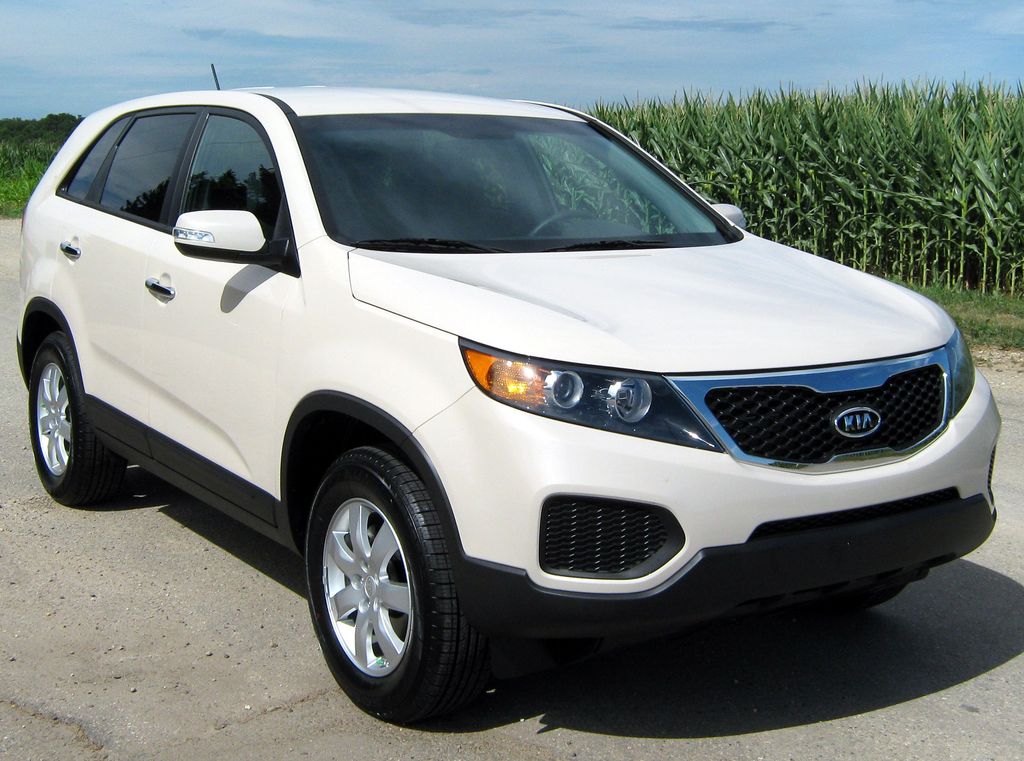
6. Kia Seltos
The Kia Seltos burst onto the scene with a fresh design, competitive pricing, and the promise of modern features in the compact SUV segment. For many budget-conscious buyers, it presented an attractive entry point into the popular SUV market. However, despite its initial appeal and affordability, the Seltos quickly began to garner a troubling reputation for reliability issues that significantly undermine its value proposition, prompting warnings from automotive experts and experienced mechanics alike.
One of the most alarming problems reported by owners and echoed by professionals like TikTok mechanic Zach Trahan, involves instances of the Kia Seltos randomly shutting off while driving. This is not merely an inconvenience but a grave safety concern that can put drivers and passengers at serious risk on busy roads or highways. Such unpredictable operational failures highlight fundamental flaws within the vehicle’s electronic or powertrain management systems, suggesting a lack of thorough real-world testing or inherent design weaknesses.
Beyond these critical safety issues, the Seltos has been cited for a broader array of problems that diminish the overall ownership experience. While specific mechanical details beyond “many issues” are not explicitly detailed in some public warnings, the collective sentiment from those familiar with its common failures points to frequent trips to the service department. This often translates into escalating maintenance costs and considerable downtime for owners, negating the initial savings promised by its affordable purchase price.
For prospective buyers, the Seltos presents a dilemma. Its stylish exterior and feature-rich interior might catch the eye, but its propensity for significant operational failures and a general pattern of unreliability serve as a stark warning. As Zach Trahan bluntly put it, the Seltos has “many issues that make it not worth its relatively inexpensive price,” a sentiment that savvy consumers should heed when evaluating long-term dependability over initial cost.
Car Model Information: 2024 Kia Seltos S
Name: Kia Seltos
Caption: Kia Seltos (SP2, facelift)
Manufacturer: Kia
ModelCode: SP2,SP2i,SP2c
Aka: Kia KX3#SP2c
Production: 2019–present
ModelYears: 2021–present (North America)
Assembly: ubl
Designer: Hong Seok Choi
Class: Subcompact crossover SUV
BodyStyle: Sport utility vehicle
Layout: ubl
Platform: Hyundai-Kia K2 platform
Related: ubl
Engine: ubl
Transmission: ubl
Wheelbase: ubl
Length: ubl
Width: Convert
Height: ubl
Weight: ubl
Predecessor: Kia KX3#KC
Sp: us
Categories: 2020s cars, All-wheel-drive vehicles, All articles with dead external links, Articles containing Korean-language text, Articles with dead external links from June 2025
Summary: The Kia Seltos (Korean: 기아 셀토스) is a subcompact crossover SUV manufactured by Kia. Introduced in mid-2019, the Seltos is positioned between the smaller Stonic, Soul, or Sonet and the larger Sportage in Kia’s global SUV lineup.
The Seltos is designated as a global product with three variations introduced for different markets. The first variation is the largest version of the Seltos, which is manufactured in South Korea (codename: SP2) mainly aimed at developed markets, including North America and Australasia. The two other variations are the Indian-made Seltos (codename: SP2i) and the closely related Chinese version badged as the Kia KX3 (codename: SP2c). The SP2i and SP2c models are the low-cost versions of the Seltos to penetrate emerging markets, built on the Hyundai-Kia K2 platform and closely related to the second-generation Hyundai Creta/ix25. Despite being a globally marketed model, the Seltos is not sold in the European market.
The name “Seltos” is derived from “Celtos”, the son of Hercules and Celtine in Greek mythology. According to Kia, the Seltos will be marketed to millennials.
Get more information about: Kia Seltos
Buying a high-performing used car >>>
Brand: Kia Model: Seltos
Price: $22,421 Mileage: 29,506 mi.
Read more about: Retirement-Ready Hybrids: Top 2025 Picks and Critical Ownership Insights for Lasting Value
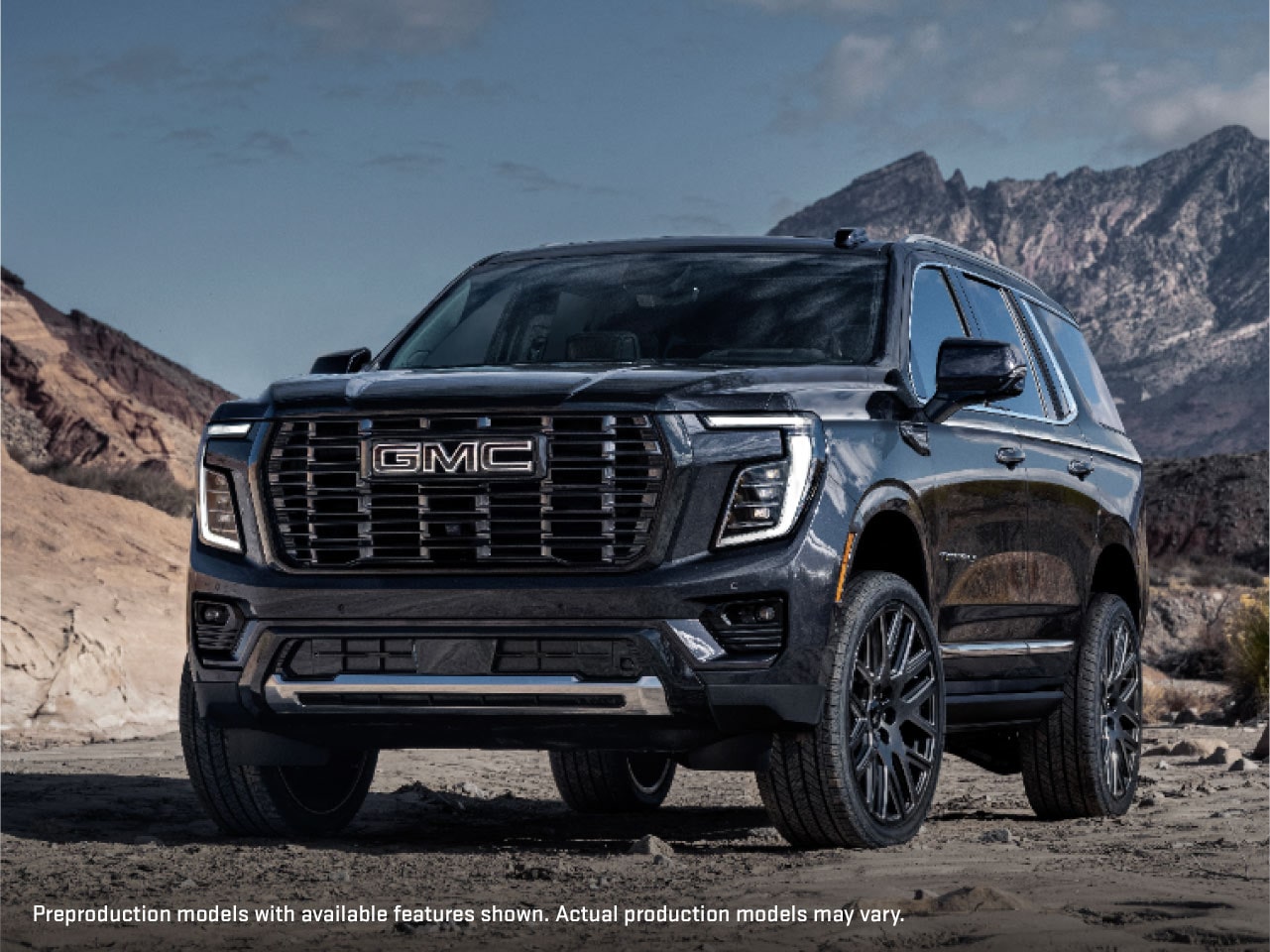
7. GMC Yukon / Chevrolet Tahoe
The GMC Yukon and Chevrolet Tahoe have long been stalwarts in the full-size SUV segment, often lauded for their spacious interiors, powerful towing capabilities, and perceived longevity. These vehicles, frequently considered reliable workhorses, command a significant presence on American roads and represent a substantial investment for families and businesses. However, beneath their imposing exteriors and long-standing market presence, certain model years, particularly those equipped with the 6.2-liter engine, have developed a notorious reputation for severe, costly mechanical failures.
According to insights from mechanics such as Zach Trahan, the 6.2-liter engines found in some iterations of the GMC Yukon and Chevrolet Tahoe are plagued by “significant issues that make them unreliable.” A primary culprit in these engine woes is the Displacement on Demand (DOD) system, also known as Active Fuel Management (AFM). While designed to improve fuel efficiency by deactivating cylinders during light-load driving, this technology has frequently led to premature lifter failure, excessive oil consumption, and camshaft wear, triggering expensive and often recurring repairs.
Adding to the list of critical engine problems are widespread reports of crank bearing failures. This type of failure is catastrophic, often requiring a complete engine rebuild or replacement, which can easily run into thousands of dollars. Such deep-seated mechanical defects in high-value, high-mileage components fundamentally undermine the expectation of reliability that buyers typically associate with these iconic American SUVs. The financial burden of these repairs is exacerbated by the inherently high purchase price of these vehicles.
Considering the substantial financial outlay for a new or used Yukon or Tahoe, encountering such significant engine failures well before the 100,000-mile mark represents a profound disappointment and a severe financial blow. These are not minor repairs but critical breakdowns that compromise the vehicle’s core functionality and reliability. Consequently, while their spaciousness and capability might still appeal, the inherent risks associated with their specific engine issues necessitate extreme caution for any buyer seeking a long-term, dependable SUV.
Car Model Information: 2021 GMC Yukon Denali
Name: Chevrolet Tahoe,GMC Yukon
Manufacturer: General Motors
Production: 1991–present (Yukon),1994–present (Tahoe)
Class: Full-size SUV
Related: Cadillac Escalade,Chevrolet Suburban,Chevrolet Silverado,Hummer H2
Layout: Front-engine, rear-wheel-drive layout
Predecessor: Chevrolet K5 Blazer
Caption: 2022 Chevrolet Tahoe RST (fifth generation)
Categories: 2000s cars, 2010s cars, 2020s cars, All-wheel-drive vehicles, All articles with unsourced statements
Summary: The Chevrolet Tahoe () is a line of full-size SUVs from Chevrolet marketed since the 1995 model year. Marketed alongside the GMC Yukon for its entire production, the Tahoe is the successor of the Chevrolet K5 Blazer; the Yukon has replaced the full-sized GMC Jimmy. Both trucks derive their nameplates from western North America, with Chevrolet referring to Lake Tahoe; GMC, the Canadian Yukon.
Initially produced as a three-door SUV wagon, a five-door wagon body was introduced for 1995, ultimately replacing the three-door body entirely. The five-door wagon shares its body with the Chevrolet and GMC Suburban (today, GMC Yukon XL) as a shorter-wheelbase variant. Since 1998, the Tahoe has served as the basis of the standard-wheelbase GMC Yukon Denali and Cadillac Escalade luxury SUVs. The Tahoe is sold in North America, parts of Asia such as the Philippines, and the Middle East, plus other countries including Bolivia, Chile, Peru, Colombia, Ecuador, and Angola as a left-hand-drive vehicle. The Yukon is only sold in North America and the Middle East.
The Tahoe has regularly been the best-selling full-size SUV in the United States, frequently outselling its competition by two to one.
Get more information about: Chevrolet Tahoe
Buying a high-performing used car >>>
Brand: GMC Model: Yukon
Price: $53,999 Mileage: 57,032 mi.
Read more about: 11 SUVs That Promise Adventure But Deliver Owners Immediate Regret

8. Land Rover
The Land Rover brand stands as an icon of luxury, rugged capability, and sophisticated off-road prowess. Its vehicles, from the stately Range Rover to the adventurous Discovery, project an image of unparalleled quality and exclusivity, attracting buyers who desire a blend of premium comfort and serious utility. Yet, despite their luxurious appeal and formidable reputation in certain circles, Land Rover vehicles collectively carry a persistent and well-documented reputation for significant reliability shortcomings and high long-term ownership costs, a fact widely acknowledged by automotive professionals.
Mechanics worldwide consistently warn drivers about the “potential for significant issues” with Land Rover vehicles. This isn’t a singular model’s flaw but rather a systemic concern across the brand’s lineup, encompassing a broad spectrum of problems that can range from complex electrical system failures to air suspension issues, problematic engines, and various other mechanical gremlins. The advanced technology and intricate systems that contribute to their luxurious feel and off-road capability often become liabilities when they inevitably fail.
The sheer complexity of Land Rover engineering, combined with proprietary parts and specialized diagnostic equipment, often means that repairs are not only frequent but also prohibitively expensive. Even routine maintenance can be significantly more costly than for competitors. Owners often find themselves facing steep repair bills for issues that appear long before the vehicle has reached an age or mileage where such problems would typically be expected in more reliable marques.
For many buyers drawn to the allure of Land Rover, the dream of owning a sophisticated, capable luxury SUV can quickly turn into a financial nightmare. While the brand maintains a dedicated following among those who prioritize its unique blend of attributes, the consistent warnings from auto mechanics serve as a crucial reality check. Those in the market for a dependable, cost-effective long-term companion would be wise to proceed with extreme caution, recognizing that the initial purchase price is often just the beginning of a costly ownership journey.
Read more about: Unveiling the Masters: A Definitive Look at 14 of the Greatest Screenwriters in Cinema History
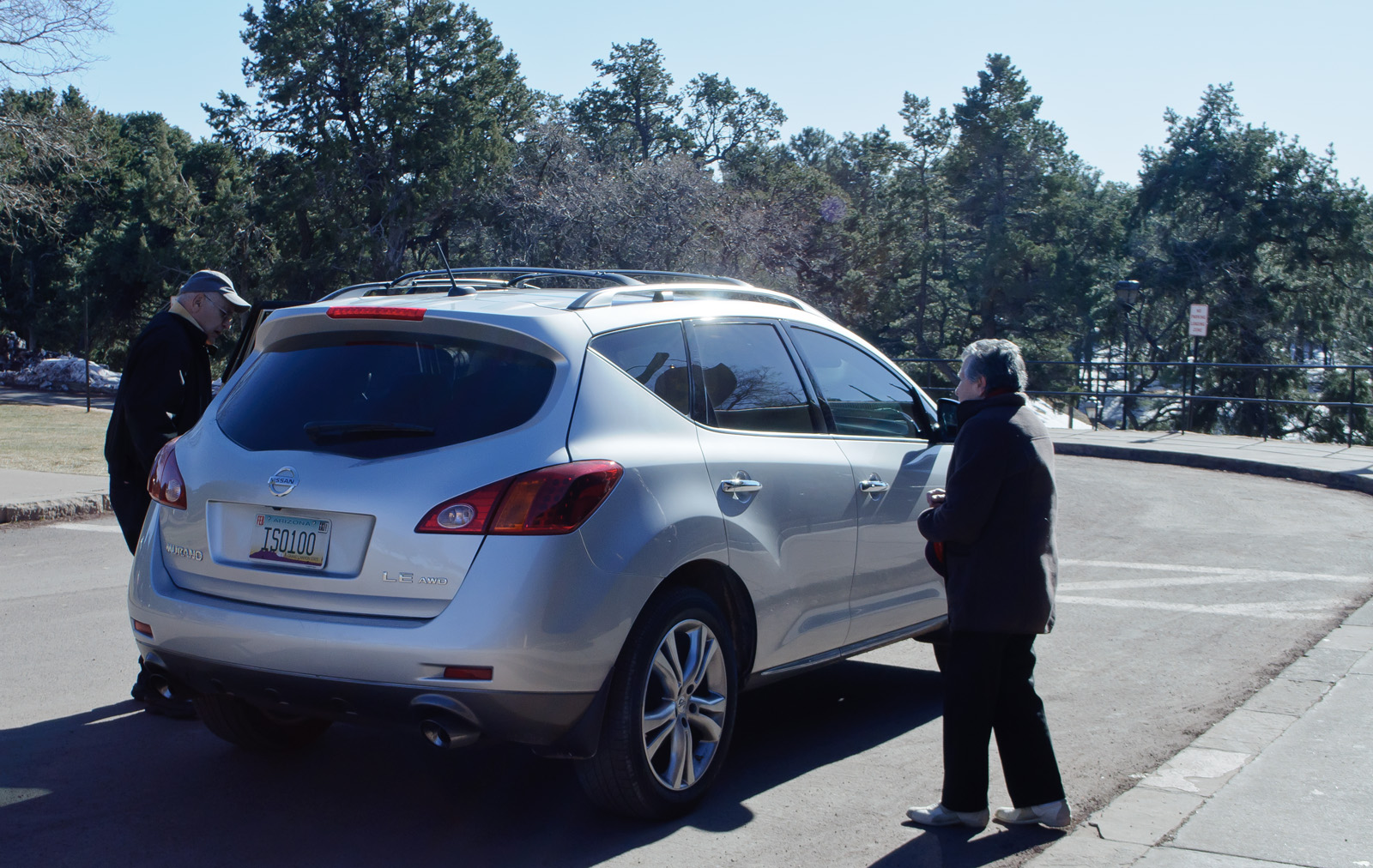
9. Nissan Murano (2009–2013)
The Nissan Murano, particularly the models produced between 2009 and 2013, was a distinctive entry in the mid-size crossover segment, known for its sleek styling and comfortable, upscale interior. It appealed to buyers seeking a blend of sedan-like comfort with SUV practicality. However, this generation of the Murano regrettably developed a concerning track record for several persistent and costly mechanical problems, primarily centered around its engine and transmission, which tarnished its long-term reliability image.
A major area of concern for the 2009-2013 Murano involves its engine, which faced “several engine-related problems.” Owners frequently reported issues with engine cooling, a critical system failure that can lead to severe overheating. Overheating, if not promptly addressed, can cause catastrophic engine damage, including warped cylinder heads and blown head gaskets, resulting in repairs that can easily amount to thousands of dollars and significantly shorten the vehicle’s lifespan.
Compounding these engine troubles were common transmission problems. While the specific type of transmission (often Nissan’s Continuously Variable Transmission, or CVT, for this era) is not explicitly detailed in all context, the reports indicate “minor or major glitches that affect drivability.” These issues could manifest as hesitation, jerking, or a general lack of responsiveness, directly impacting safety and driving confidence. Such transmission failures are notoriously expensive to repair or replace, often presenting owners with a financial burden they didn’t anticipate.
Furthermore, motor mounts in this Murano generation proved to be another weak point. These crucial components, designed to secure the engine and absorb vibrations, were prone to “crack or become worn over time.” This degradation would lead to noticeable vibrations inside the cabin, detracting from the vehicle’s refined feel and signaling underlying mechanical stress. Owners were advised to “keep an eye out for any strange noises or warning lights,” as these could indicate the onset of these costly engine and transmission-related issues, making early intervention critical yet still expensive.
Ultimately, the Nissan Murano from 2009 to 2013, despite its initial appeal, fell short in delivering consistent long-term reliability. The cumulative effect of its engine cooling problems, transmission glitches, and premature motor mount wear created a frustrating ownership experience, often leading to unforeseen and substantial repair costs for unsuspecting buyers. It stands as a prime example of how even a well-styled and comfortable vehicle can become a liability if its core mechanical components are not engineered for enduring reliability.
Car Model Information: 2013 Nissan Murano S
Name: Nissan Murano
Manufacturer: Nissan
Production: 2002–present
ModelYears: 2003–present
Class: Mid-size crossover SUV
Layout: Front-engine, front-wheel-drive layout
Predecessor: Nissan R’nessa
Successor: Nissan Pathfinder#Pathfinder Concept (2023, China)
Caption: 2024 Nissan Murano (Z52)
Categories: 2010s cars, 2020s cars, All-wheel-drive vehicles, All Wikipedia articles written in American English, All articles with dead external links
Summary: The Nissan Murano (Japanese: 日産・ムラーノ, Hepburn: Nissan Murāno) is a mid-size crossover SUV manufactured and marketed by Nissan since May 2002 for the 2003 model year. The fourth generation was revealed in October 2024.
As Nissan’s first crossover SUV for the United States and Canada, the Murano was designed at Nissan America in La Jolla, California, and was based on the Nissan FF-L platform shared with the third generation Altima. The European version of the Murano began sales in 2004.
The Murano was Nissan’s only crossover SUV in the United States until September 2007, when the Rogue went on sale. In Canada, the X-Trail had been on sale as Nissan’s second car based SUV since 2004 as a model for 2005; it was replaced by the 2008 Rogue at the end of 2007. The Murano is sized between the Pathfinder and the discontinued Xterra (which was replaced by the Rogue as a compact SUV). For the model years of 2011 to 2014, a convertible variant, the Murano CrossCabriolet, was available for the second-generation model. As of 2018, the Murano is sized between the X-Trail and the larger Pathfinder.
The nameplate Murano derives from the Italian islands of Murano and the namesake Murano art glass for which the islands are widely known.
Get more information about: Nissan Murano
Buying a high-performing used car >>>
Brand: Nissan Model: Murano
Price: $7,835 Mileage: 119,262 mi.
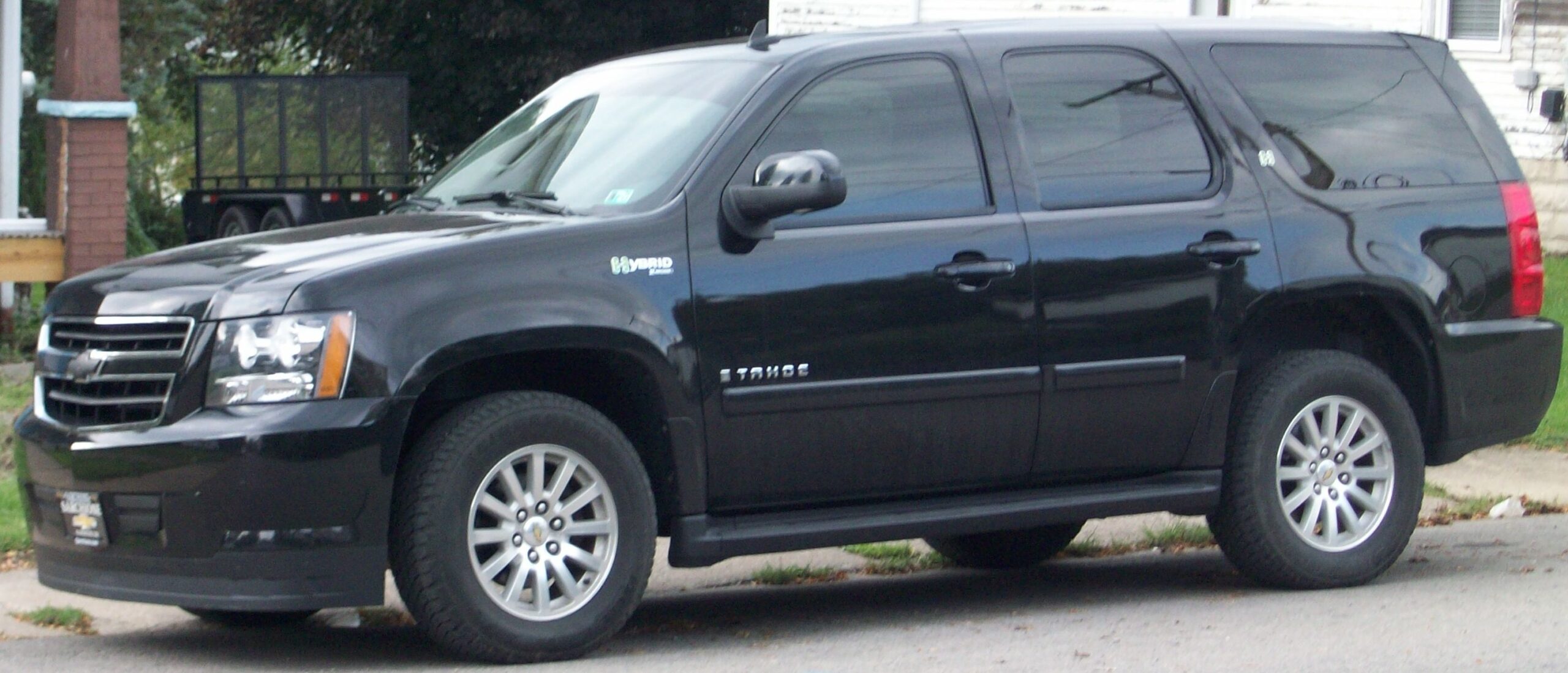
10. Chevrolet Tahoe Hybrid
The Chevrolet Tahoe Hybrid represented an ambitious effort to merge the full-size SUV segment’s practicality and power with improved fuel efficiency through hybrid technology. Launched into a market that wasn’t fully prepared for hybridized large SUVs, it “struggled to find its footing,” facing an uphill battle against established consumer perceptions and expectations. While offering promising features on paper, its journey was ultimately marked by disappointment, both in market acceptance and, crucially, in long-term reliability.
A significant factor in its market struggles was the “timing and consumer expectations.” SUVs, at the time of its launch, were traditionally not associated with hybrid powertrains; buyers of full-size vehicles often prioritized raw power and towing capacity over marginal fuel economy gains, making it “hard for the Tahoe Hybrid to gain traction.” This disconnect meant that despite its innovative engineering, it “simply didn’t resonate with buyers who preferred conventional options,” leading to lower sales volumes than anticipated for a vehicle of its stature.
Beyond market reception, the Tahoe Hybrid was also afflicted by “various mechanical issues,” which further contributed to owner frustration. Among these, “problems with the HVAC system” were specifically noted, indicating a flaw in a critical comfort and climate control component. Malfunctioning heating, ventilation, and air conditioning systems are more than mere annoyances; they detract significantly from the user experience, especially in a vehicle designed for family comfort and long journeys.
The combination of lukewarm market acceptance and persistent mechanical issues meant that the Tahoe Hybrid “didn’t live up to the reputation of its non-hybrid counterparts.” While conventional Tahoe models often boasted robust, if thirsty, powertrains known for their durability (outside of the specific 6.2L issues discussed earlier), the hybrid variant introduced new layers of complexity and potential failure points. This made it a less reliable and ultimately more disappointing choice for buyers hoping for the best of both worlds.
For those considering a used Chevrolet Tahoe Hybrid, its history serves as a cautionary tale. The mechanical issues, particularly with components like the HVAC, combined with the complexities of early hybrid systems in a large SUV, can lead to expensive and difficult-to-diagnose repairs. Its struggle to find market acceptance, juxtaposed with reliability challenges, positions it as an SUV that ultimately failed to deliver on its promise, making it a vehicle to approach with significant trepidation if long-term dependability is a priority.
In today’s SUV-dominated market, buyers face a crucial fork in the road: invest in a vehicle engineered for the long haul, or gamble on one that might become a money pit. This guide presented both ends of the reliability spectrum to help you make an informed decision—because when it comes to long-term ownership, not all SUVs are created equal.
On one side, we saw mechanical excellence and enduring design in SUVs like the Toyota Land Cruiser, Honda CR-V, Lexus GX, Toyota 4Runner, and Subaru Forester. These vehicles have earned their reputations the hard way—by withstanding years of wear, high mileage, harsh environments, and real-world abuse. Their formulas are simple: robust engines, reliable transmissions, conservative tech, and strong owner communities. The result? SUVs that keep running long after others have called it quits, offering peace of mind, excellent resale value, and lower lifetime costs.
Contrast that with the other half of this story—SUVs like the Jeep Cherokee, Ford Explorer, Chevrolet Equinox, Nissan Pathfinder, Dodge Journey, Kia Seltos, specific GMC Yukon/Chevy Tahoe models, the Land Rover brand, Nissan Murano (2009-2013), and the Chevrolet Tahoe Hybrid. Each started with potential but stumbled due to design flaws, rushed engineering, or poor long-term testing. Common themes among them include weak transmissions, underbuilt engines, excessive electronic complexity, and corner-cutting in both quality and durability.
Car Model Information: 2021 Chevrolet Tahoe LT
Name: Chevrolet Tahoe,GMC Yukon
Manufacturer: General Motors
Production: 1991–present (Yukon),1994–present (Tahoe)
Class: Full-size SUV
Related: Cadillac Escalade,Chevrolet Suburban,Chevrolet Silverado,Hummer H2
Layout: Front-engine, rear-wheel-drive layout
Predecessor: Chevrolet K5 Blazer
Caption: 2022 Chevrolet Tahoe RST (fifth generation)
Categories: 2000s cars, 2010s cars, 2020s cars, All-wheel-drive vehicles, All articles with unsourced statements
Summary: The Chevrolet Tahoe () is a line of full-size SUVs from Chevrolet marketed since the 1995 model year. Marketed alongside the GMC Yukon for its entire production, the Tahoe is the successor of the Chevrolet K5 Blazer; the Yukon has replaced the full-sized GMC Jimmy. Both trucks derive their nameplates from western North America, with Chevrolet referring to Lake Tahoe; GMC, the Canadian Yukon.
Initially produced as a three-door SUV wagon, a five-door wagon body was introduced for 1995, ultimately replacing the three-door body entirely. The five-door wagon shares its body with the Chevrolet and GMC Suburban (today, GMC Yukon XL) as a shorter-wheelbase variant. Since 1998, the Tahoe has served as the basis of the standard-wheelbase GMC Yukon Denali and Cadillac Escalade luxury SUVs. The Tahoe is sold in North America, parts of Asia such as the Philippines, and the Middle East, plus other countries including Bolivia, Chile, Peru, Colombia, Ecuador, and Angola as a left-hand-drive vehicle. The Yukon is only sold in North America and the Middle East.
The Tahoe has regularly been the best-selling full-size SUV in the United States, frequently outselling its competition by two to one.
Get more information about: Chevrolet Tahoe
Buying a high-performing used car >>>
Brand: Chevrolet Model: Tahoe
Price: $44,585 Mileage: 51,444 mi.
Read more about: 11 SUVs That Promise Adventure But Deliver Owners Immediate Regret
They’ve burdened owners with frequent repairs, expensive out-of-warranty fixes, and in some cases, safety concerns. While some were sold in large numbers, their reliability track records are hard to overlook, and their resale values often reflect that. The lesson here is clear: when shopping for an SUV—especially one you plan to keep beyond the warranty period—reliability should weigh just as heavily as features, horsepower, or brand prestige. A stylish design or low sticker price means nothing if you’re stranded on the shoulder or hemorrhaging money in repair bills. Choose wisely. An SUV can be a lifelong companion—or a constant burden. The difference lies in its DNA, and as we’ve shown, some SUVs are built to run forever—while others were never ready for the long road ahead.

